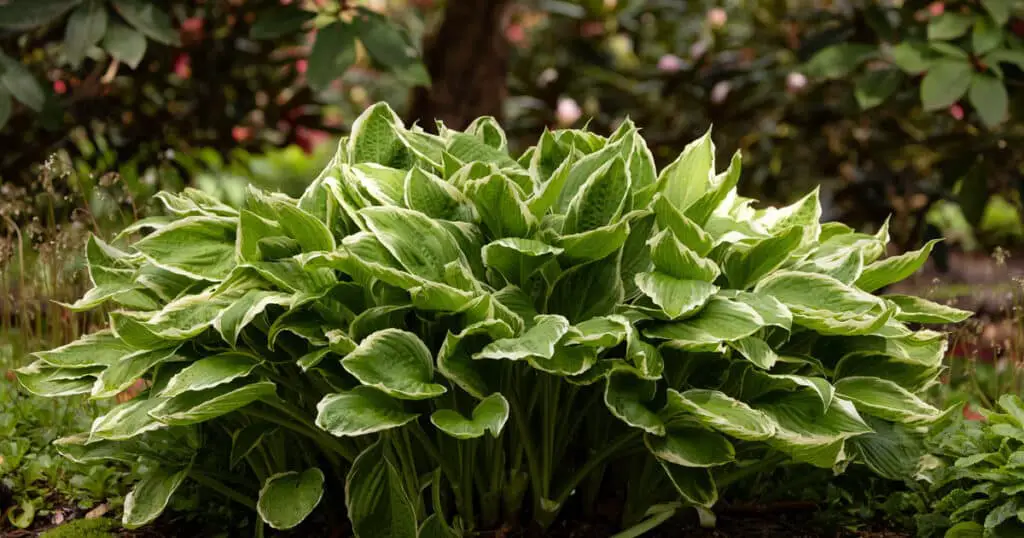The large, beautiful leaves and the mild scent of their summer blooms make Hosta attractive and irresistible to gardeners. Homeowners with a green thumb love planting this shade-loving perennial in their gardens. But if you’ve got a lot of deer in the area, you must be asking: do deer eat hostas?
After all, deer are well-known garden pests! As enthusiastic herbivores, they don’t hesitate to gobble up a wide variety of popular flowers and plants. But are hostas on the menu?
Do Deer Eat Hostas? (Answered)
Yes, deer do eat hostas. In fact, the hosta plant is one of the first a deer will eat in any garden. This plant has large leaves filled with moisture that deer love.
What Are Hostas?
Hostas are commonly cultivated as shade-tolerant leaves and come in 45 different species. They’re often referred to as “plantain lilies” in the United Kingdom. In Japan, they’re sometimes referred to by a nickname, “giboshi.”
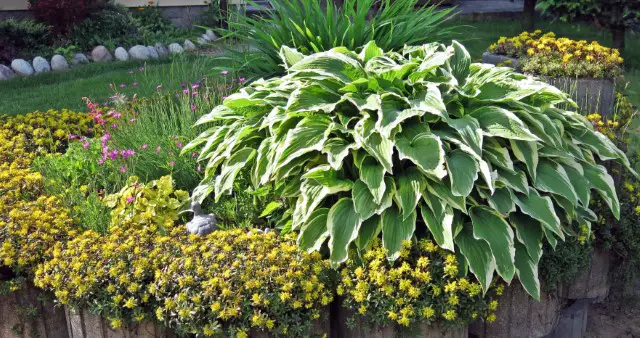
This plant’s flowers grow on upright scapes that are woody and stay in the plant throughout the winter months. They’re usually taller than the leaf mounds.
The flowers themselves are typically pendulous, ranging from 2 to 5 cm. They feature six petals, and you may see them in white, lavender, or violet hues. Hosta flowers usually have no discernible scent.
The real star of the show, however, is the foliage of Hosta plants, which provides 3-season interest and comes in many shapes and colors.
Why Do Deer Eat Hostas?
Your local deer herd will certainly eat Hosta leaves whenever they have the chance. Deer usually pull out plants from the ground and then eat the foliage and branches.
Deer find it easy to pull out hostas. These animals also dislike strong scents, which is why they appreciate how this plant doesn’t have a noticeable smell.
The large leaves filled with moisture are an absolute treat for deer, which is why they can get destroyed in a single night.
Are Some Hostas Deer Resistant?
No, there’s no such thing as a deer-resistant hosta plant. In fact, hostas are pretty much candy for cervids.
In any case, deer will eat a wide variety of plants when they’re hungry. They’ll even turn to items they don’t enjoy when their usual food sources are scarce.
Are Deer Eating My Hostas?
Examine the leaves of your hostas to determine if deer have been eating them. A hungry deer will devour the plant by breaking the leaves from the stems.
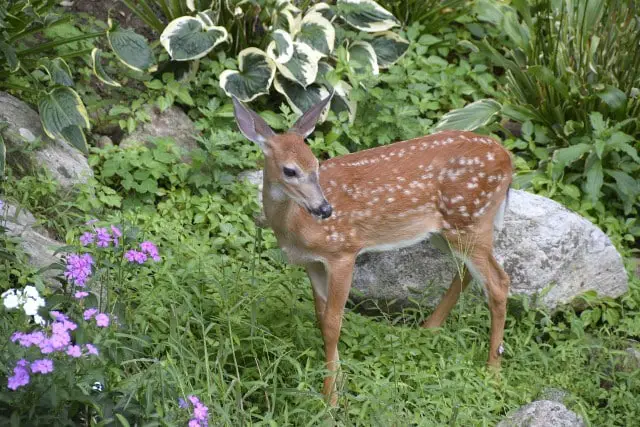
However, the stem will remain in its original form, meaning you’ll have an appearance similar to the spiky stalks of celery that poke up out of the hosta mound.
You can also look for deer tracks or deer droppings around your garden beds.
Can you see hoof prints embedded in the soil? They resemble an upside-down heart.
If you have mulch, or if the ground is wet, the deer’s hoof will be able to sink and leave an impression that appears like a deep, circular hole.
You might also find piles of deer droppings that look like tiny black pebbles. That’s another clear indication of deer activity.
If you’ve observed these warning indications, then you could be sure that your plants are at risk of being consumed.
Will Hostas Grow Back After Deer Eat Them?
Finally some good news – yes, Hosta plants can recover if a deer has eaten some of its leaves. We suggest cutting the plants to the ground (i.e., until they are entirely buried) when this happens.
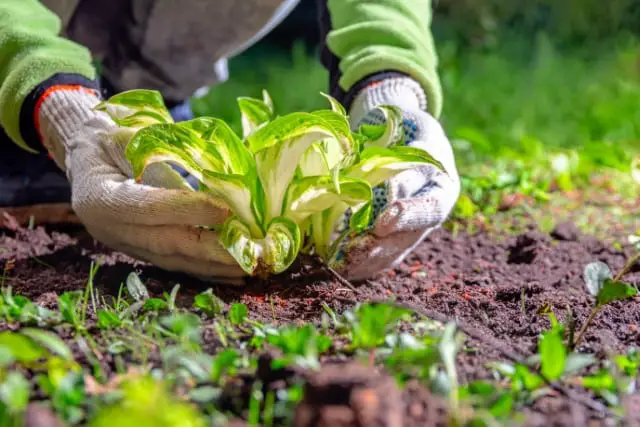
If it occurs early in the year, the hosta could have new leaves that year. However, in most cases, you’ll have to wait until spring to allow the hosta to begin producing leaves again.
In the winter, cover the soil over the roots with straw or mulch to give them an extra layer of protection.
How to Keep Deer From Eating Hostas?
You need to understand deer behavior in order to protect your hostas and other plants.
Deer are naturally sensitive and skittish. They are often scared whenever they notice something different in their environments. That’s part of their natural defense mechanism to protect themselves from predators.
If something is not right, the animals will be frightened and quickly spring (literally, they could leap up to 12 feet high when they are scared) and then run away. Deer are fast, and can cover long distances in a short time to escape.
Having a large dog that barks may scare deer away from your property. However, this probably won’t be enough on its own. After all, it cannot be alert and outside all the time.
Here is a list of methods that you can use to avoid deer from destroying your garden or eating your plants:
Fencing
While fencing in your property is expensive, it’s the best way to stop deer from getting near your garden.
But that’s only true if the fence is high enough. After all, deer can jump as high as eight feet.
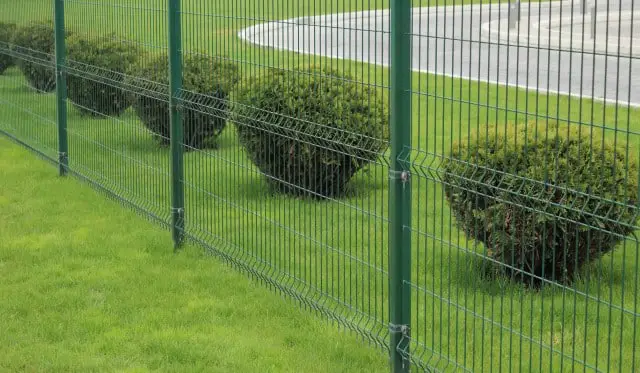
It’s best to install a fence that is between 10 and 12 feet tall.
If you can’t put up a fence that high, you could get one that’s between six and eight feet high but that is installed at a 60-degree angle.
The angle should be outward-facing. This positioning should thwart deer wanting to jump over.
An alternative option is, covering your flowers using floaters or nets. However, this is a bit of a hassle as you’ll have to re-do it twice each day (once at night and then at dawn).
If you’re going to use this technique, you should purchase quality nets that have reinforced edges. These will make sure that wind won’t remove the nets from your plants.
Use Motion Sensitive Devices
Motion-sensitive lighting is an excellent solution to protect your hostas from danger. They also play an essential part in helping you decide between a short and tall fence.
A deer entering your yard will automatically activate the lights. The light alone can make it difficult for deer to come inside and make them run away.
If you’re looking for something low-tech, wind chimes may be effective (at least for a while). An iconic outdoor feature, they usually alarm deer with their constant sounds.
But deer may become accustomed to the sounds of the chimes and this can lessen their fear with time.
Sensor equipment is another popular option. Most sensor equipment you can buy come with lights and sound pre-installed. Some even include sprinklers that can chase wild animals away.
These devices are available both in day and night mode providing 24 hours of security.
Deer-repellent smells
Eggs and garlic are just two examples of strong scents that stop deer and other animals from eating your hostas as well as other plants in your garden.
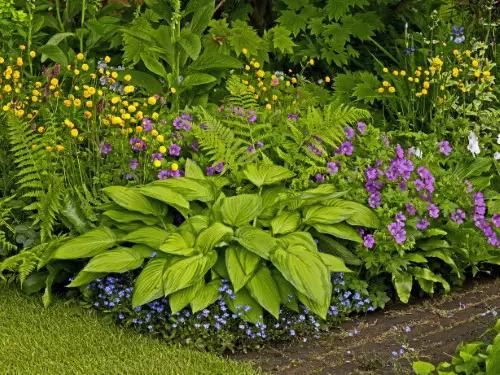
Remember, you must apply the fragrance regularly to ensure they are working.
Repelling Taste
Tabasco sauce, rotten eggs, cayenne pepper, and other powerful spice blends may also help keep garden invaders at bay. You’ll have to keep applying these deterrents.
Pets
As mentioned above, deer and animals are afraid of predators. If you have a pet, let it wander around freely in the garden. The scent and noise from the pet will scare away the deer.
You can also use decoy animals if you don’t own a pet or can’t let it remain outside all day.
Raised Garden Beds
If nothing else works, remember that the hostas are plants that love the shade; you can relocate them to areas that animals cannot access.
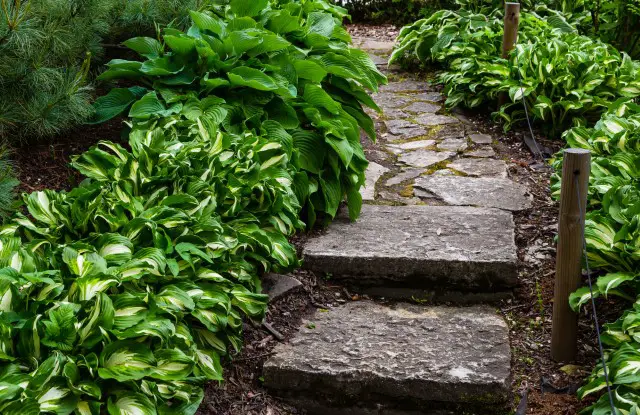
You could use a raised garden bed or garden container to house your Hosta plants.
Unfamiliar textures, such as peastone gravel walkways or mulch, can also serve as effective barriers to deter deer from entering garden areas that you want to protect.
Yes, Deer Do Eat Hostas
Hostas are gorgeous flowers that will brighten any garden. But you’ll have to protect them if you have deer in the area.
Follow the proactive tips that we’ve set out here to keep your hostas safe and sound.

